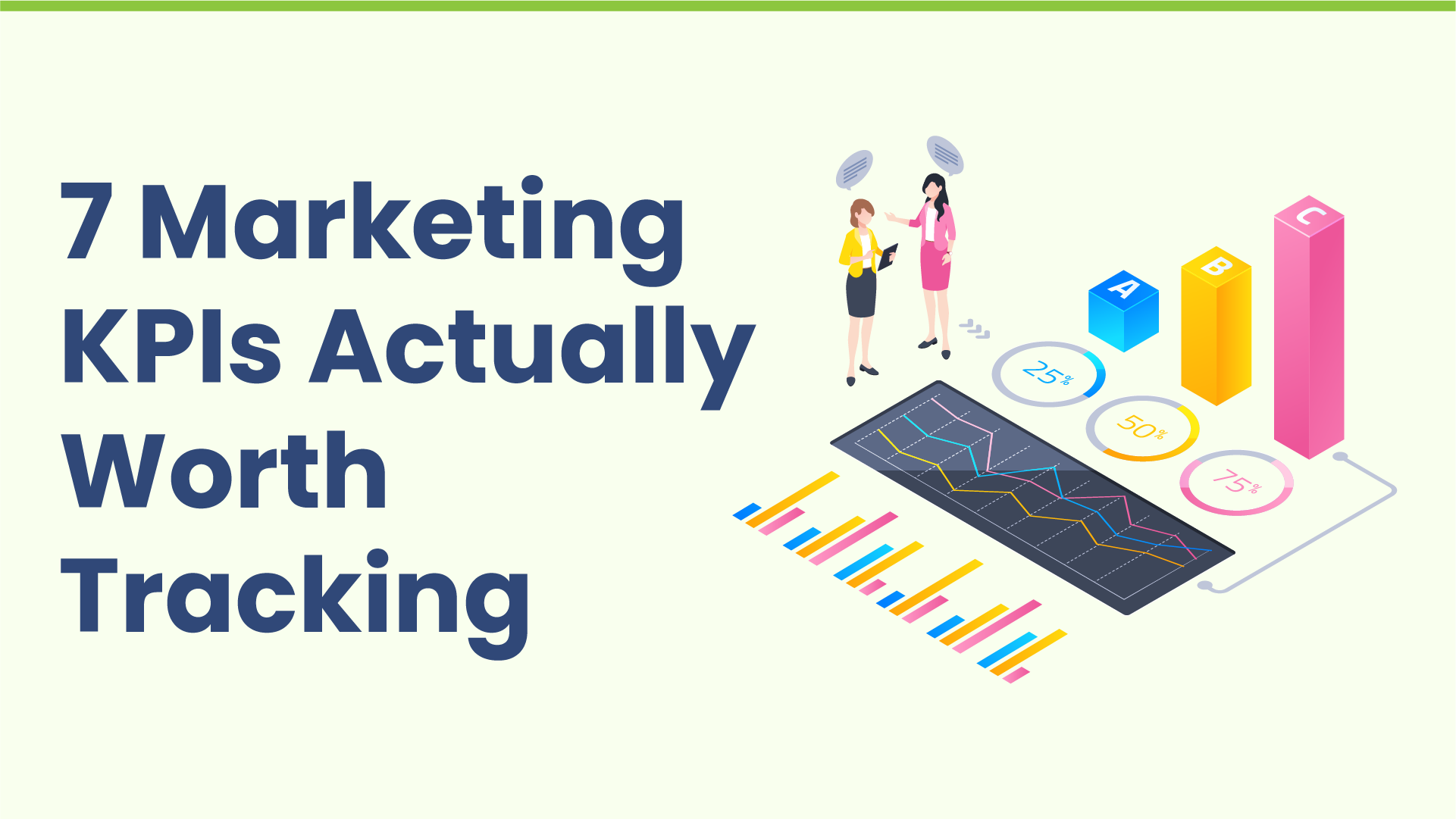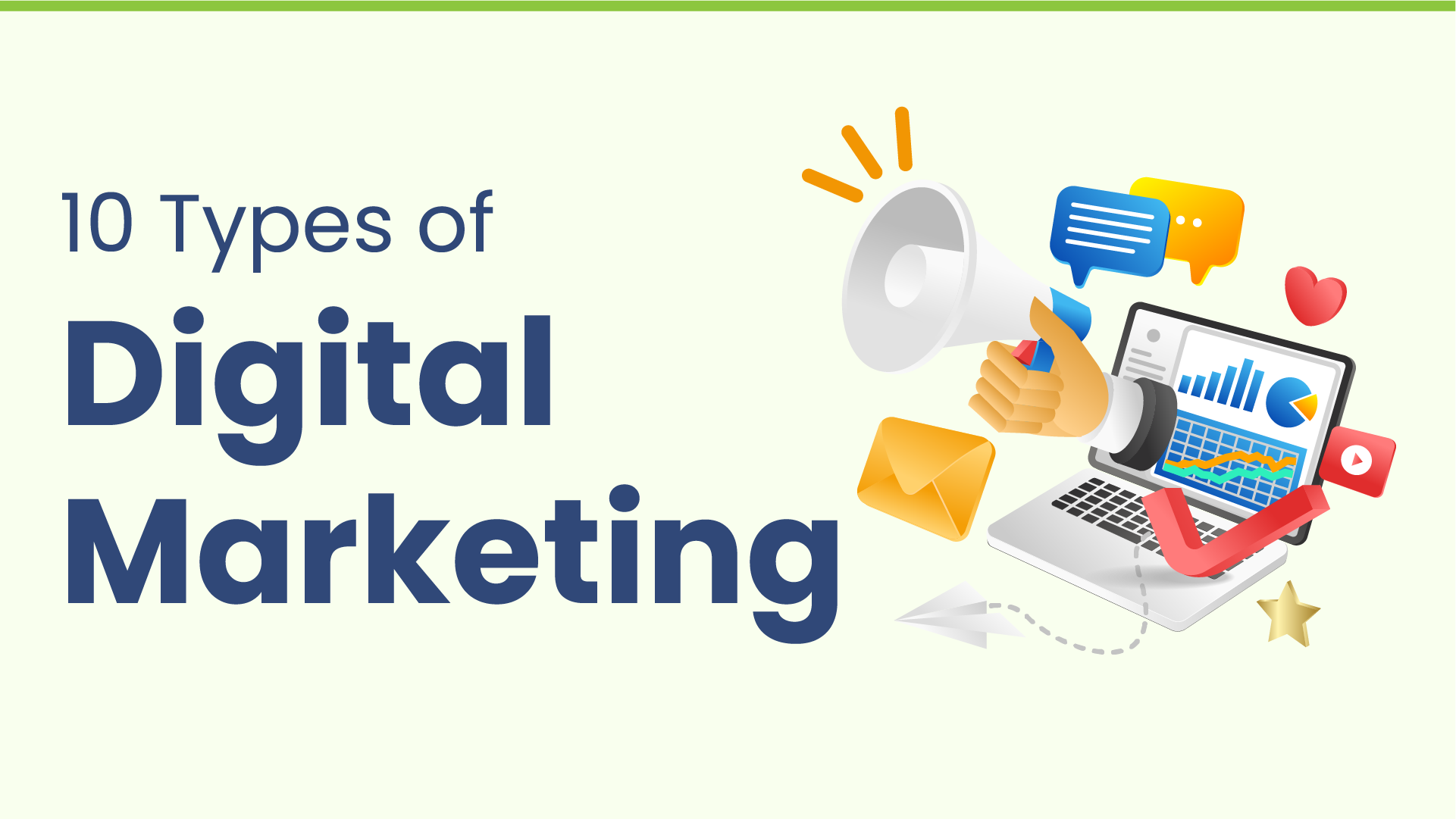
Job roles are typically linked to Key Performance Indicators (KPIs). This is a misconception, though. KPIs for marketing strategies must also be monitored.
You can assess the success of your advertising efforts by keeping an eye on marketing KPIs.This evaluation promotes prompt and knowledgeable decision-making. By monitoring your advertising KPIs, you may improve your strategy and budget and ultimately surpass your competitors.
The primary focus should be on the marketing KPIs that are appropriate for your business. The reason for this is that the kinds of marketing KPIs you select have a direct bearing on the expansion of your company. Selecting the wrong KPIs could cause you to overlook important information and make bad choices.
For your PPC ads, you could choose to focus all of your efforts on measuring leads, sales, or Customer Acquisition Cost (CAC). To be successful, you should monitor a number of additional parameters.
KPIs for marketing are essential for company expansion. For your reference, below are seven examples of marketing KPIs:
Sales numbers
Sales data is one of the easiest ways to monitor the various kinds of marketing KPIs. One excellent example of a marketing KPI that you can use to track your company’s growth is sales data. This statistic monitors and assesses the effectiveness of your sales force as well as the sales activities that are carried out. By optimizing sales numbers, you can improve your sales performance, sales cycle length, and sales funnel.
Sales KPIs, however, are contingent upon your company’s goals. The ideal marketing KPI for one individual may not be the same for another. Remember to choose the financial metric that best suits your business plan and strategy.
SaaS solutions, for example, can focus on either Monthly Recurring Revenue (MRR) or Annual Recurring Revenue (ARR) as a marketing KPI. Conversely, the “grow at all costs” mentality can support venture capital-backed companies’ success even when costs outweigh revenues.
How is it quantified?
Sales data are relatively easy to estimate because they are value-based. You can easily measure your sales KPIs with a dashboard. You can filter, view, or segment sales data at various times using a sales dashboard, which is a visual representation of the data. You can simply manage your sales functions, spot possible problems, and streamline your sales process with a dashboard.
To put it another way, a sales dashboard shows your KPIs and sales indicators in real time. It might be a dashboard and reporting tool, or it can be a spreadsheet.
However, when it comes to sales KPIs, sales teams frequently toss away too many metrics. Because of this, it is challenging to see what is truly taking place. Setting strategic marketing goals is a better strategy to create your sales dashboards.
For marketing analysis, you can also employ Google Analytics and other enhanced e-commerce tracking solutions. You must keep in mind that web analytics technologies are not perfect and might not record everything. Therefore, don’t use those numbers for your sales KPI.
Among the sales KPIs you should think about tracking are gross or net profit margins, sales revenue, funnel flow, sales targets, closing rates, client retention, etc.
Getting users and clients
Gaining consumers and clients is a crucial first step in the expansion of your company. It describes the number of new clients or client profiles you are adding to your clientele. Leads, prospects, and customers are the three stages of user and customer acquisition.
Although it might not result in increased revenue, growing your user base more quickly has an impact on the success of your company. Increased brand recognition results from gaining more users and clients. Additionally, it boosts word-of-mouth, which helps your firm develop over the long run.
For any business, expanding the customer is the ideal marketing KPI. Tracking user and customer acquisition activities is so essential. Metrics related to customer acquisition are a great approach to determine whether or not your marketing efforts are drawing in the correct clients. Additionally, they provide you with a comprehensive understanding of how to enhance your marketing tactics.
How is it quantified?
The following are some instances of marketing KPIs that are used to measure user and customer acquisition:
- Conversion rate
- Demo signups
- Revenue by channel
- Revenue by marketing activity
- Lifetime value
- Annual contract value
- Customer Acquisition Cost (CAC)
- Click Through Rate (CTR)
- Cost Per Click (CPC)
Quantity and quality of leads
One of the most crucial strategic marketing goals that businesses set in order to attain their intended growth is lead generating. To generate leads, you must use a variety of marketing methods. However, how can you gauge the true effect of your lead creation strategies?
Marketing KPIs for lead number and quality hold the key to the solution. The indicator informs you of how well your marketing campaigns are working to draw in prospects and turn them into paying clients.
Inadequate lead quality and quantity lead to lower conversion rates and increased bounce rates. A higher number of interested prospects suggests that your marketing strategies are more successful. Therefore, the growth of your clientele and sales is ultimately determined by the amount and quality of your leads.
Additionally, you can reach a lot of prospects with your lead generating campaign. These potential customers might not always intend to buy. Many of them might only want to look into what you have to offer. As a result, one crucial marketing KPI to monitor is lead quality. It allows you to determine the percentage of prospective clients that are actually interested in buying something.
How is it quantified?
With the help of your customer relationship management system (CRM), you may quickly determine the quantity of leads. But monitoring the caliber of your leads takes more work and preparation. Here’s where lead scoring is useful.
An automated system that assigns a score to each lead based on the supplied pertinent data can be developed. CRM platforms with integrated lead-scoring capabilities are another option. Make sure your decision aligns with your company’s objectives.
When assessing the quantity and quality of your leads, you can take into account the following information:
- User actions on your website or application
- Trail tier and configuration
- Any user correspondence with your sales or customer service representatives
- Information gathered during the user registration phase
Customer Lifetime Value (CLV)
Customer Lifetime Value, or CLV, is an example of a marketing KPI. The entire revenue you can anticipate from a single customer is indicated by this measure. CLV takes into account variables like average transaction value, frequency of consumer purchases, and length of engagement with your business. What is the purpose of CLV measurement?
CLV is a helpful statistic since it helps you define strategic marketing goals for customer acquisition and retention and provides you with the long-term value of your customers. It aids in effective resource allocation, audience targeting, and well-informed sales and marketing strategy decision-making.
To calculate CLV, you need a few years’ worth of sales data. With this, you can also determine which of the three indicators requires improvement. You might think of each of these inputs as a cantilever that you can use to raise your CLV.
How is it quantified?
The following formula is used to determine CLV:
CLV = AOV * PF * CL
Where:,
AOV stands for Average Order Value.
It shows how much a customer typically spends on each purchase. Finding the average sale value is a good place to start. If you don’t have data for a long time, you can use one or three months as a stand-in for a year.
The acronym for Purchase Frequency is PF.
It shows how many purchases a consumer typically makes in a specific time frame. Does a customer make a purchase once every few years or several times a week? One important factor influencing CLV is the frequency of purchases.
Customer Lifespan is referred to as CL.
It shows how long a consumer stays with your business on average. For instance, brands of technology or cars have devoted, lifetime customers. Retail chains, meanwhile, might have less devoted patrons.
To further grasp the CLV measure, let’s look at an example:
Assume that a customer has been doing business with you for four years on average, and that your APV is $100. The customer makes the transaction six times a year. Your CLV would then look like this:
CLV = 100 * 6 * 4 = $2400
Calculating CLV can be difficult if your tracking systems are not up to par.It can be easier with an Enterprise Resource Planning (ERP) or CRM. It provides all of the data on automated dashboards that monitor KPIs.
SOV (Share of Voice)
The Share of Voice indicator shows how much of your advertising is in comparison to that of your rivals. Another way to put it is that it helps you compare your competitors’ brand awareness across various marketing platforms.
The primary purpose of this business-to-business marketing KPI was to assess the effectiveness of sponsored advertising. You can have a better understanding of your company’s visibility and areas for improvement by measuring your SOV. For instance, you know where you need to work harder if you have a larger voice in organic traffic but a smaller one on social media.
Despite their similar sounds, market share and voice share are not the same thing. SOV measures your brand’s visibility across several platforms. Conversely, market share is the proportion of the market that you control in terms of clients and sales.
Nonetheless, your income and market share are correlated with your SOV.For example, having a greater SOV in online discussions will increase your income and influence among people. You generate extra SOV (eSOV) when your SOV exceeding your market proportion.
How is it quantified?
It can be challenging to obtain a single SOV number that encompasses all of your marketing platforms. You can select a measure that represents the SOV for each channel to make things easier.The brand’s measure may then be divided by the market’s overall measure to calculate the ratio. You’ll need a few marketing tools for this.
A social media automation tool, for instance, can be used to track brand mentions. Now figure out how many times your competitors have been mentioned. By dividing the amount of data by the overall amount of social network mentions, someone may then get the SOV percentages.
Rank Tracker is a great tool for tracking your SOV and that of your competitors in organic search. To see the visibility in the Competitors Overview page, add the domains of your competitors, and keep an eye on your keywords in the Rank Tracker.
Your SOV may be represented by the following marketing platforms and associated KPIs:
- Social media: Brand mentions against your competitors
- Paid search: Impression share
- TV ads: Gross Rating Points (GRP)
- Organic Search: Visibility in Search Engine Results Pages (SERPs)
Brand awareness metrics
KPIs for brand awareness marketing must be part of your marketing strategy. Brand recognition affects your company’s overall growth because it is a major factor in customers’ purchasing decisions. It facilitates brand recognition, relatability, and memory. Consequently, increasing brand recognition may help turn strangers into happy, devoted clients.
However, it is crucial to monitor brand awareness even if you have the best brand-building initiatives in place. The reason for this is that brand awareness is a reflection of your brand’s sentiment and exposure across a range of media.
Is your brand well-known in your industry? Does their positioning align with yours? These are important questions that you need to get the answers to. Measuring your brand awareness will help you achieve this. It facilitates efficient resource allocation, brand awareness strategy optimization, and company progress tracking.
Your objectives, target consumers, and marketing channels may all influence how you gauge brand awareness. You may monitor how people perceive your brand over a given period and select from a variety of brand awareness KPIs.
These indicators can be used to track performance, gauge brand recognition, and calculate the ROI (return on investment) of awareness efforts, among other things.
How is it quantified?
Measuring brand awareness indicators can be challenging, despite their importance to your company. You may determine your brand awareness using a variety of metrics, such as:
- Traffic to Websites
In addition to demonstrating that people are becoming aware of your brand, your site traffic also suggests that they are interested in finding out more about you.
- Impression of a brand
The number of individuals who saw your material is indicated by brand impressions. Metrics like clicks, engagement, and website traffic may be seen from this, and you can see how your target audience responded to the content of your campaign.
- Value of earned or free media
Publicity from third parties that you did not buy is known as earned media. Among other things, it may consist of social media and blog mentions. You can determine who is discussing your brand and how by measuring earned media.
- Participation on social media
Is there a favorable or unfavorable awareness of your brand on social media? Does this awareness make people want to follow you? Through likes, comments, and shares, social media engagement reveals how users are interacting with your brand.
- Data on search volume
You can determine the level of interest in your brand by looking at search volume data. It also shows how your search traffic compares to that of your rivals.
- Interviews and surveys on brand awareness
Interviews or surveys on brand awareness can provide context for your quantitative data. They also assist you in establishing relationships with your audiences. Surveys can be conducted via phone, email, or online forms.
- External connections
Another way to assess brand recognition is to look at your external relationships. It assists you in locating misspelled or incorrectly linked content on your website. This ensures that you don’t miss any valuable opportunities to raise brand awareness.
Net Promoter Score (NPS)
The Net Promoter Score is a great tool for understanding and getting to know your consumers.
You may use NPS to find out how satisfied and loyal your consumers are. Users are asked to score their level of approval on a scale of one to ten in the questionnaire. The score indicates the likelihood that customers will tell friends or coworkers about your product or service.
Because of its ease of use, NPS is frequently utilized by marketing and customer service departments. It employs just brand loyalty and customer happiness to gauge how well a company is performing.
The NPS scale allows customers to specify whether they are promoters, passives, or critics. “Passives” are participants who select any number they want between 7 and 8. The term “passives” refers to respondents who select any number between 7 and 8. Lastly, people who select a number between 9 and 10 are labeled “Promoters.”
You can follow up with the positives or criticisms by breaking down your customers. In this manner, you might learn why these clients aren’t promoting you and how to please them.
How is it quantified?
The first step in calculating your NPS score is to remove the number of critics from the number of promoters. After that, multiply by 100 and divide by the total number of responders. Anywhere between -100 and 100 can be the score. If your score is higher than zero, your supporters do better than your critics.Higher growth is implied by more satisfied customers.
Numerous NPS survey distribution mechanisms are available to you, including email, physical, and online. Additionally, you can get your NPS score from a variety of software programs. But remember that this is only a score. You ought to go beyond and make an effort to comprehend the rationale behind the client reactions. Additionally, when determining your NPS, you can provide additional space for comments or follow-up inquiries. Qualitative data can be extracted in this way.
Last but not least, avoid setting up marketing KPIs for no reason. Setting strategic marketing goals based on these criteria is essential for long-term success.



